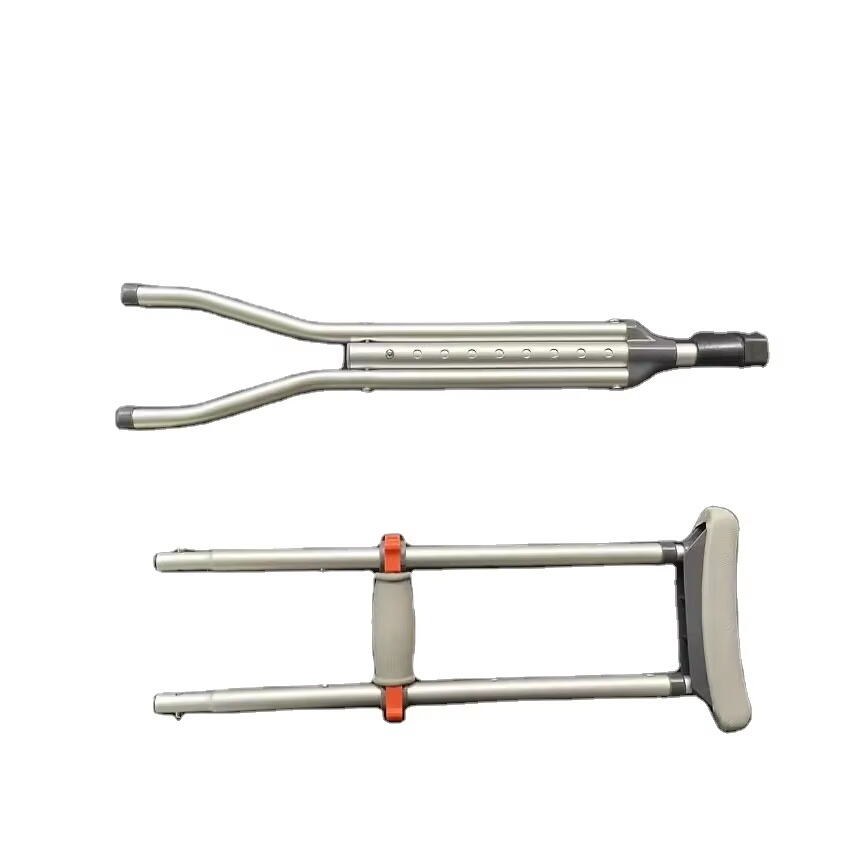Understanding the Role of Mobility Aids in Recovery
When facing an injury that affects your ability to walk, having the right support system becomes crucial for maintaining independence and facilitating proper healing. Armpit crutches, also known as axillary crutches, have long been a trusted companion in injury recovery, offering stability and support when you need it most. These traditional mobility aids have evolved over time, incorporating improved designs and materials to enhance user comfort and safety during the rehabilitation process.
The journey to recovery often requires reliable tools that can accommodate various needs while preventing further injury. Armpit crutches have maintained their position as a go-to mobility solution, particularly because they provide excellent stability and are relatively easy to master with proper instruction. Their design principles have remained largely unchanged because they effectively distribute body weight and reduce stress on injured lower extremities.

Design Features and Benefits of Modern Armpit Crutches
Ergonomic Construction for Enhanced Comfort
Modern armpit crutches feature carefully engineered components that prioritize user comfort during extended use. The padded underarm supports are designed with high-density foam that maintains its shape while providing crucial cushioning. The handgrips are positioned at an optimal angle to reduce wrist strain and feature non-slip materials that ensure a secure hold even during extended use.
The height adjustment mechanisms have also seen significant improvements, allowing users to achieve precise fitting that accommodates their specific body measurements. This customization is essential for preventing potential complications and ensuring proper posture throughout the recovery period.
Materials and Durability Standards
Today's armpit crutches are constructed using lightweight yet durable materials such as aircraft-grade aluminum or advanced composites. These materials offer an optimal balance between strength and maneuverability, ensuring that users can navigate their environment with confidence. The non-skid rubber tips provide reliable traction on various surfaces, while the structural components are designed to support users of different weights and activity levels.
Quality construction extends to every component, from the reinforced joints to the impact-resistant tips. This attention to durability means that armpit crutches can withstand the demands of daily use throughout the entire recovery period, making them a cost-effective mobility solution.
Proper Usage and Safety Considerations
Mastering the Correct Technique
Success with armpit crutches largely depends on proper usage techniques. The underarm pad should rest against the ribcage, approximately two inches below the armpit, while the handgrips should position the elbows at a slight bend. This positioning helps distribute weight effectively and prevents nerve compression in the underarm area.
Movement patterns require coordination and practice, but most users can become proficient within a few days of guided use. The key is maintaining proper posture and using the handgrips to bear weight rather than letting the underarms support the body's full weight.
Safety Protocols and Maintenance
Regular inspection of armpit crutches is essential for ensuring continued safety. Users should check the rubber tips for wear, verify the security of all adjustment mechanisms, and ensure that padding remains intact. Replacing worn components promptly helps prevent accidents and maintains the crutches' effectiveness as a recovery aid.
Environmental awareness also plays a crucial role in safe crutch usage. Users must be mindful of surface conditions, especially in wet or uneven areas, and should establish clear pathways in their living and working spaces to prevent accidents.
Rehabilitation Progress and Recovery Timeline
Gradual Weight-Bearing Protocols
Healthcare providers typically establish specific weight-bearing protocols that guide the progression of recovery. Armpit crutches excel in accommodating these protocols, allowing users to gradually increase weight-bearing as healing progresses. The stability offered by these mobility aids helps users maintain proper form while following their prescribed recovery plan.
Physical therapists often incorporate crutch-assisted exercises into rehabilitation programs, helping patients build strength and confidence while ensuring proper healing of injured areas. This structured approach helps prevent setbacks and promotes optimal recovery outcomes.
Monitoring and Adjusting Support Needs
As recovery progresses, the way armpit crutches are used may change. Healthcare providers regularly assess patients' progress and adjust usage recommendations accordingly. Some users may transition from full weight-bearing assistance to partial support, while others might graduate to a single crutch before completely resuming normal walking.
The adaptability of armpit crutches makes them valuable throughout various stages of recovery, providing appropriate levels of support as users regain strength and mobility. Regular communication with healthcare providers ensures that support levels align with healing progress.
Frequently Asked Questions
How long does it typically take to adjust to using armpit crutches?
Most users become comfortable with basic armpit crutch usage within 24-48 hours of proper instruction. However, mastering more challenging movements, such as managing stairs or uneven surfaces, may take several days to a week of practice under supervision.
Can armpit crutches be used for all types of lower body injuries?
While armpit crutches are suitable for many lower body injuries, they may not be the best option for all situations. Your healthcare provider will assess your specific injury, overall physical condition, and lifestyle needs to determine if armpit crutches are the most appropriate mobility aid for your recovery.
What are the key maintenance requirements for armpit crutches?
Regular maintenance includes checking the rubber tips for wear, ensuring all adjustment mechanisms are secure, cleaning the handgrips and underarm pads, and inspecting the frame for any damage. Replace worn components immediately and periodically verify that all adjustable parts are properly tightened.

 EN
EN









































